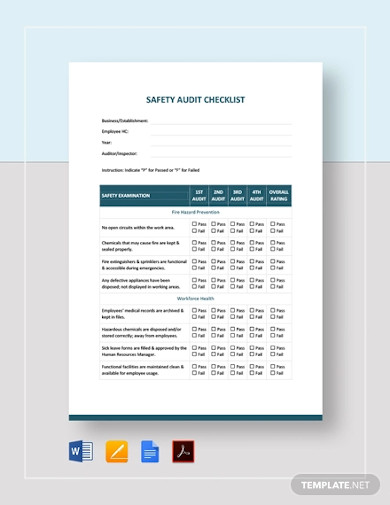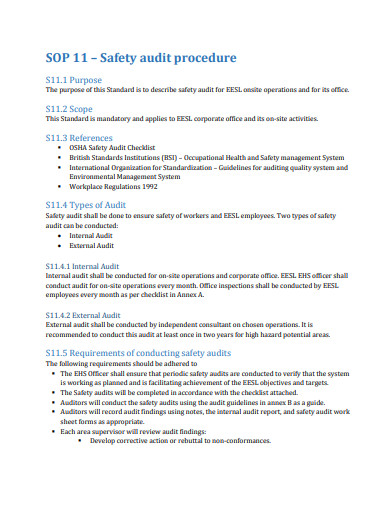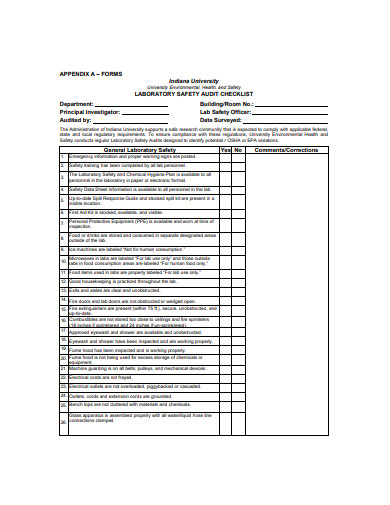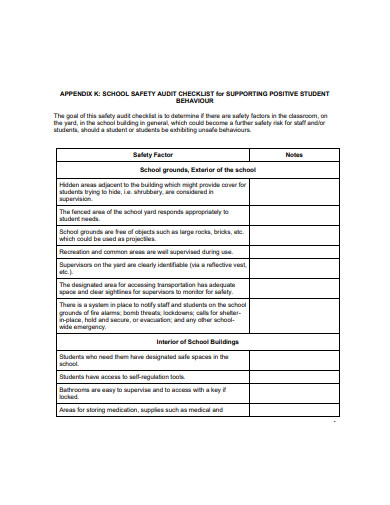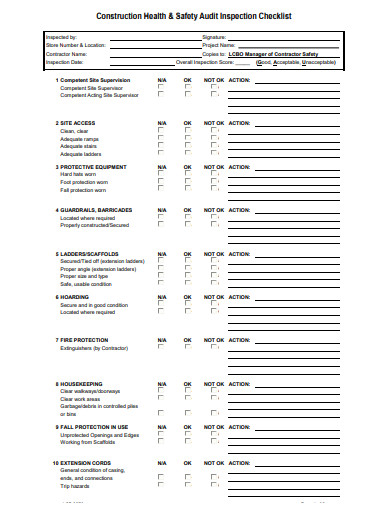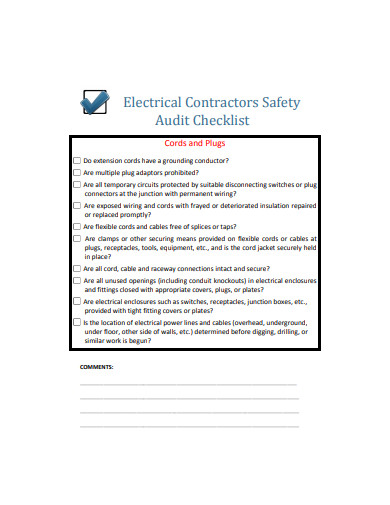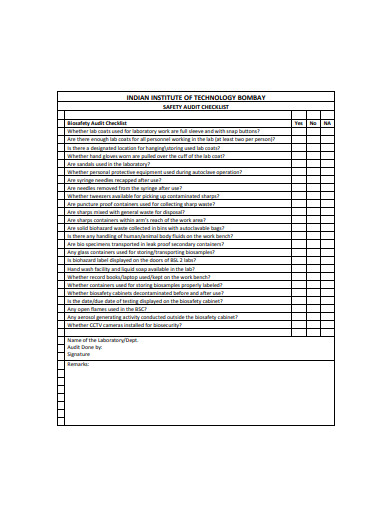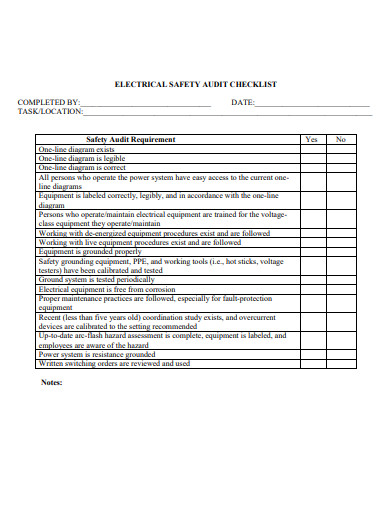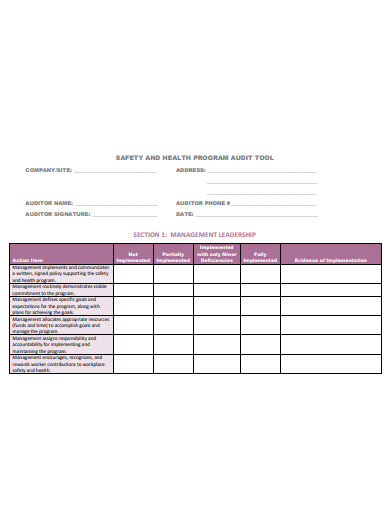15+ Safety Audit Examples to Download
In a workplace, such as manufacturing factories, construction fields, warehouses, and more, there are always risks, especially the ones that involve employees’ health and safety. To lessen the likeliness of these risks to occur, the Occupational Safety and Health Administration (OSHA) mandates the private sector, as well as the state, local, and federal government agencies, to conduct health and safety-focused inspections. Such activity is what we call a safety audit. Its report consists of entities’ checklist on their respective compliance to the directives. To give you more hint of what a safety audit is, you can take a look at these 12+ Safety Audit Examples in PDF, Google Docs, Microsoft Word, and Apple Pages file formats.
15+ Safety Audit Examples
1. Safety Audit Checklist Template
2. School Safety Audit Checklist Template
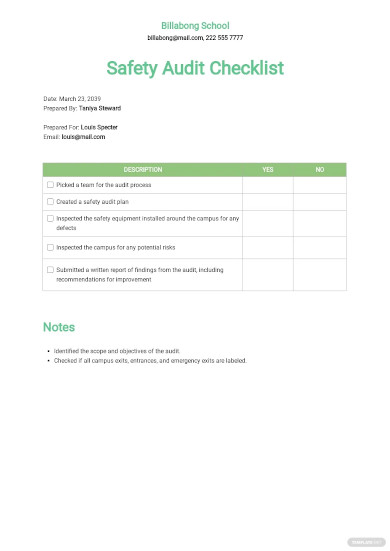
3. Health and Safety Audit Report Template
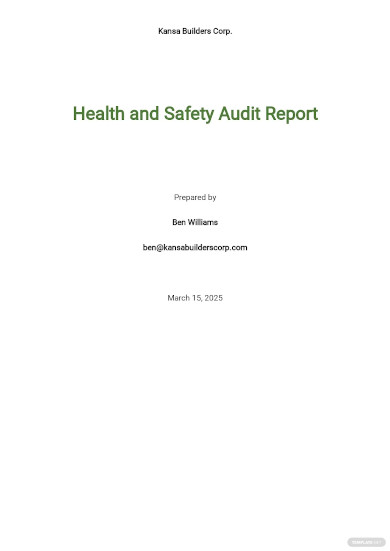
4. Food Safety Internal Audit Report Template
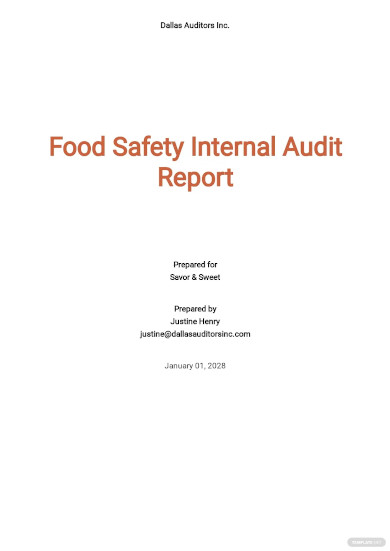
5. Fire Safety Audit Checklist
6. Electrical Safety Policy Self Audit Checklist
7. Safety Audit Procedure
8. Laboratory Safety Audit Checklist
9. Laser Safety Audit Checklist
10. School Safety Audit Checklist
11. Construction Health and Safety Audit Inspection Checklist
12. Laser Safety Self-Audit Checklist
13. Electrical Contractors Safety Audit Checklist
14. Safety Audit Checklist Example
15. Electrical Safety Audit Checklist
16. Safety and Health Program Audit Tool
What Is a Safety Audit?
A safety audit is a systematic process that is organized to assess the health and safety management of a certain company in terms of functionality, authenticity, and productivity. According to Safeopedia, the main purposes of a safety audit can be categorized into two.
First, it ascertains whether or not the auditors’ subject complies with the safety measures. Second, the activity distinguishes any safety deficiencies that can guide the inspectors in coming up with an action plan to correct them. Frankly, the two points are still too broad, and that safety audit is way more complicated, that every involvement must be accompanied by extensive research.
The Different Types of Safety Audit
There are three types of safety audits. These are compliance audits, program audits, and safety management system audits. The compliance audit is the simplest type of safety audit. It is conducted to ensure that the auditing subject duly observes the legal regulations and prerequisites in proportion to safety. Next is the program audit. This type of audit ensures that the corrective actions that have been set to mitigate or eliminate safety risks are implemented. The last type of safety audit is the safety management system audit. This refers to the general safety assessment. It is the simultaneous scrutiny of a company’s safety management systems, compliance, and programs.
How to Carry Out a Safety Audit
The OSHA standards are updated once every six months. This fact simply states that no matter how much experience and knowledge you have in the audit industry, specifically in the safety sector, you still have to adjust to a lot of innovative ways that successfully complete one safety audit. It may be true that the methodologies change; however, the phases you have to go through can still be of use. If you are unaware of what those phases are, then you better check out our list below.
Step 1: Study the Updated OSHA Regulations
It has been given that OSHA amends its safety guidelines for every six months. Therefore, there is a need for auditors to thoroughly study the new sets of standards for them to be able to know how to comply with them. These guidelines are very much available in multiple sources, especially now that the internet has come to play.
Step 2: Create and Answer Standard-Based Questionnaire
After studying the up-to-date specifications of OSHA, create a standard-based questionnaire for you and your team, then answer them from top to bottom. The questionnaire will act as your checklist in finding out what areas you need to put into careful consideration. In this part, you may have to review all the past safety assessment documentation regarding the company’s safety drawbacks, programs, requirements, recommendations, implementations, and maintenance.
Step 3: Report Findings
Once you have answered all the questions that you have prepared, report your findings right away. Before you write your report document, always take time to understand its goals. A better comprehension of your intentions leaves you with many hints on how to compose your details. Also, make sure that you know who the audience will be and if your style will perfectly suit their preferences. Take note that there are different types of safety audits. And, the formatting of your composition may vary on each type. In addition to that, you have to include auditing opinions, which also varies according to the type of safety audit being conducted.
Step 4: Develop Corrective Actions
If you are an actual safety auditor, then you may know the hierarchy of controls. If not, then it is best to look into it because such order plays a significant role in the safety management campaigns of your company. The hierarchy consists of five ranks. These ranks include elimination, substitution, engineering controls, administrative controls, and Personal Protective Equipment (PPE), from the most effective to the least. The hierarchy of controls can help you in developing your corrective actions. Elimination is when you remove the actual cause of hazard. Substitution emanates the idea of replacing the cause of hazard to less hazardous material or equipment. Engineering controls refer to the separation of the hazard from the prospective victims. Administrative controls have to do with altering the way workers operate around the hazard. Lastly, PPE concerns the giving of protective gear to workers, hoping to mitigate injuries that can be caused by hazards.
FAQ’s
1. What are the different types of hazards within the workplace?
1. Chemical – substances that can cause harm to workers
2. Ergonomic – physical elements whose designs ensure muscle and skeletal impairments
3. Physical – environmental strands that unintentionally harm employees
4. Psychosocial – things that negatively affect the mental health of an employee
5. Biological – diseases, viruses, or other things like that threatens the well-being of employees
2. What is an internal and external audit?
Internal audit is the auditing process where the auditors are mainly from the workforce of the subject company. Meanwhile, an external audit is the auditing process conducted by auditors that are hired by the subject company from an auditing agency.
3. Are there auditing software products that I can use?
Yes, there are. The top three auditing software products, according to Capterra, are AssessNET, Lumiform, and 1Place Childcare.
The phrase “safety first” is very much applicable, even up to today’s generation. However, we have to be constantly vigilant in handling such areas to ensure that the risks it tries to resolve will be taken care of appropriately. These details are in high regard to legal, culture, and well-being aspects.



